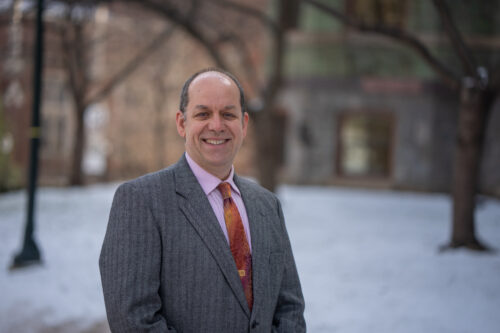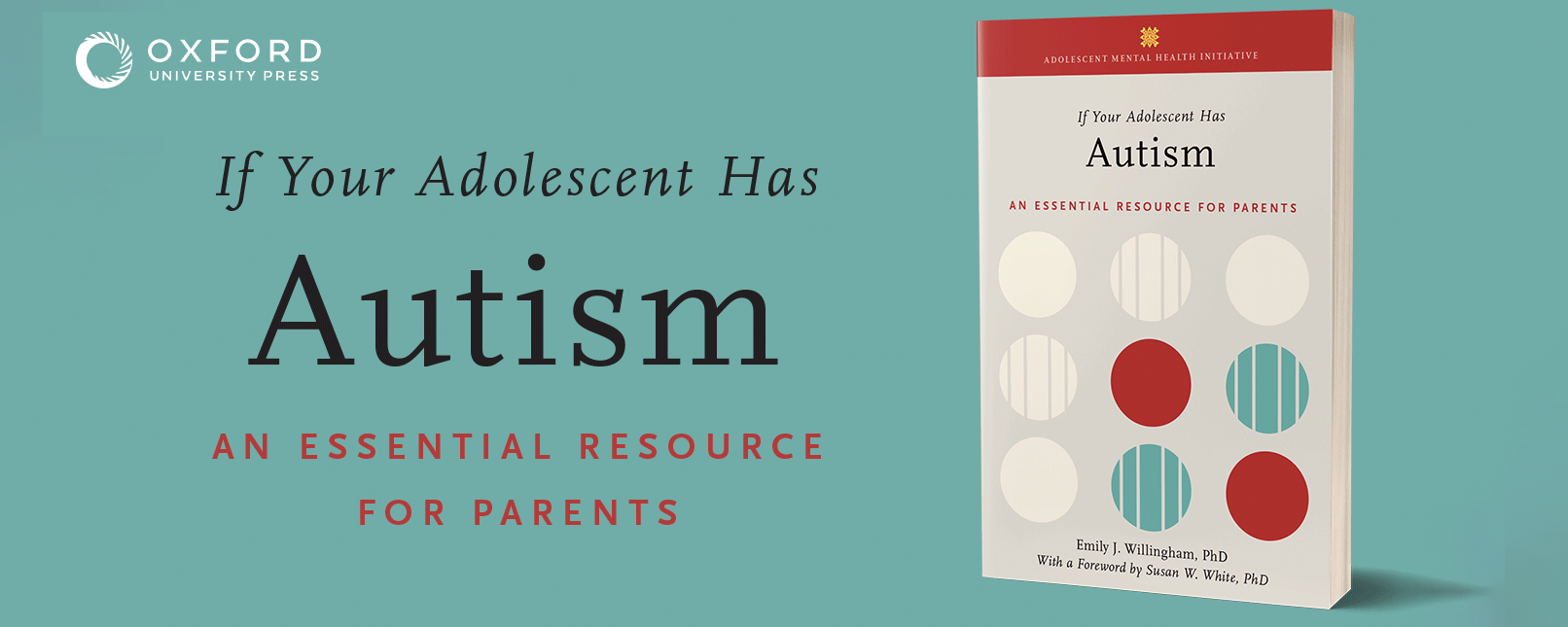John Gastil has hope. Whether he’s draping himself in Detroit Lions gear to walk around Philadelphia or contemplating the future of American democracy in 2025, the Annenberg Public Policy Center (APPC) distinguished sabbatical scholar in residence finds ways to believe that things might go well. This year, Gastil, Professor of Communication Arts & Sciences and Professor of Political Science at Penn State University, has been working on a book titled “The Democracy Machine: Reimagining How We Can Govern Ourselves Online.” He explains that the book “makes the case for developing a suite of software and tools that engage citizens in budgeting, agenda setting, and policy making.” This type of civic engagement, he believes, could help to make government more responsive and trustworthy.

Gastil came to APPC in fall of 2024 and will occupy his office on the fourth floor through May. This February, he gave a lunchtime talk about his project to the APPC community, which can be viewed here. In a follow-up conversation, Gastil spoke with APPC newsletter editor and Ursinus College Associate Journalism Professor Doron Taussig about his work at APPC. Below, Gastil discusses how ChatGPT gave him the idea to describe the relationship between digital media and democracy as a “love story,” why Trump’s victory in 2024 was a “gut punch” for his book project and how he’s dealing with it, and what he would do with a time machine.
***
DT: You describe the relationship between digital media and democracy as a love story gone wrong. I wonder if you could explain what you mean by that.
JG: When I was preparing the talk for the Annenberg Public Policy Center, I wanted to try something a little different, but I got stuck at one point, and I actually consulted ChatGPT. What would be some fun themes for the talk? Here’s my book as written to this point. Here are prior presentations. And it pitched a few [ideas], most of which seemed rather dull, but then this rom-com concept just seemed outrageous. It wanted to do the whole talk that way with stills from “You’ve Got Mail” and films that no one has ever seen at this point. But I thought it was cheeky enough that I actually did it for the preview slide.
So the idea was that it starts cute enough. Oh, look, the digital world meets democracy. So exciting! We could do e-voting, we could have public comments. It was this passionate romance. And then you kept the relationship going, but you had to look past the red flags, right? You had to say, oh, they’ll figure it out. That won’t be a problem, this misinformation thing won’t stick, we’ll fact check. But then at some point you recognize the relationship has become terribly toxic, and maybe you seek counseling, like some democratic reforms, maybe regulate a little bit. But it didn’t take. If anything, the relationship became so strained that it was really time to separate.
And so my book proposal comes in at the point where I think we should, maybe, try again – this time, probably with a prenup, right?
It’s common for people to say, “This is hopeless – if anything, digital technology is a sworn enemy of democratic process.” And I think that’s a mistake. I think there are real potential synergies. So that’s really what I’m writing about: The potential for a strong, positive relationship between digital technology and democratic reform.
DT: I wonder if you could walk us through either a real or imagined example of the kind of deliberative democratic process you’re imagining here?
JG: Here’s one of my favorite ideas that I just published with a colleague from here that does not exist: A Digital Sandbox which anyone can go into and create a voting guide. Anyone can do it. Doesn’t mean anyone will read it. The Sandbox has all sorts of potential elements of your issue guide, written by advocates of the policy change, opponents, experts, media – anyone who wants to can put stuff in there.
Then, let’s say I – I’m a reformed Quaker, like, a left-of-center progressive, and I start to form a little coalition of people. So we get in there, we start writing our voters guide. An AI system helps us because we can ask for things. It can feed us things. We can ask for counter-arguments. It can play around in the Sandbox with us, and help us out a little bit, so now we write our voters guide that is perfect for reform – Quaker, center-left. But then after one election cycle, we realize, gosh, we put about 20 hours into that, and only 40 people read it. But here’s this other group over here, who are active Quakers, so let’s form an alliance with them, and actually, let’s broaden it even a little more. I hear the Unitarians think like us, right? So now we’re reaching out, and then pretty soon, we’ve watered it down a little bit so that it appeals to people who broadly share our values. Now we’ve got a voting guide that’s getting thousands of people reading it. Now, that’s exciting, right?
DT: I remember talking to a Philadelphia politician, an elected official who played along with the civic engagement movement. I remember asking him off the record which ideas from citizens at [town hall events] had been helpful to him. And he said, it’s never happened, not a single one. It’s a complete waste of time.
I’m going to give you a time machine to go back and argue with this guy for me. What’s the message for politicians or elected officials who think that this is a big waste?
JG: [If I had a time machine], first I’d make a lot of money on the Super Bowl. It’s sad how little I’d remember, but I could bet on that. There might be one [Adam] Vinatieri field goal that I’m iffy on, so I’ll skip that year. But then I would say I’m actually also a psychic, because I can tell you, dear public official, what your public meetings are. I can tell you all the ways you interact with constituents in intimate detail, and I bet that you find it all a waste of time. Because the people you’re meeting with are the same people you’ve already heard from. You already know their point of view. It’s well established. All they’re doing is just expressing it again. If they’re contributors to you, you’re fine to let a little influence come in. But public meetings, what are you going to learn?
But I could introduce that public official to someone. I was in New Mexico right around the end of the ‘90s, and I worked with people in the highway department. And we set up these deliberative processes, small random samples analyzing complex questions about priorities for the highway department for the next 20 years. They have interesting choices, like, do we improve the most used roads, or do we maintain more roads at a lesser quality? You don’t have to know New Mexico a lot to imagine that it’s basically Albuquerque and then a lot of rural territory. So you’ve got these two interstates bisecting Albuquerque, east-west, north-south.
We held six of these [public meetings] around the state and in Albuquerque, it was clear. They said: You’ve got to maintain the roads. This is a diverse state. Just look at it. This is insane. You can’t just straighten out the highways, reduce accidents. You got to maintain more county roads.
Every single one of the other five gatherings scattered around the state said, Okay, crystal clear, let the county roads go. We’ve all got trucks. We want interstates. When we’re going any distance, we get right on the interstate. We just want to cruise. Straighten them out, make them safer. For the highway department this was incredibly empowering, because they were facing this dilemma and obviously they tend to be more urban, and so they couldn’t help but have that Albuquerque perspective. And so to see time and again these other groups say, yeah, no, gave them some clear guidance.
DT: When you started this sabbatical, and the project you’re working on, this was before the 2024 election. How either did your work, or the way you’re thinking about this work, change subsequently?
JG: Well, this is actually my second rodeo with Trump disruption. At the time Trump first ran for the 2016 presidency, I was still wrapping up a novel, “Gray Matters,” that came out in 2020, and it’s partly about AI, partly about politics and about Alzheimer’s. And it’s this complex story, but it involved some funny things, like, who is the president in this not-too-distant future? Who are they replacing? By the time I got my publisher, Trump was already in office. But he solved a bunch of plot problems. How does what’s effectively a medical device that you slip in behind your ear get fast-tracked for FDA [approval]? Not a problem, right? In Trump world, these aren’t issues. These are just things you can do. He helped me by making implausible things quite possible.
This time around, unfortunately, it was a gut punch. I knew it could come and I just kept writing. But I knew there were really two different worlds in which the book would be released. The editor I’d been working with on the book proposal said, let’s do the book proposal again, but this time, don’t sound so hopeful. You can get people there, but first you have to acknowledge that we are in a live burning hell. My last book was literally titled “Hope for Democracy.” Nobody wants to read a book that sounds, at first blush, incredibly naive. But you have to kind of keep the faith at some point and realize, well, nobody else is going to write this book. I’m in a unique position to make these arguments, make these points, and help people who want to do this important work.


